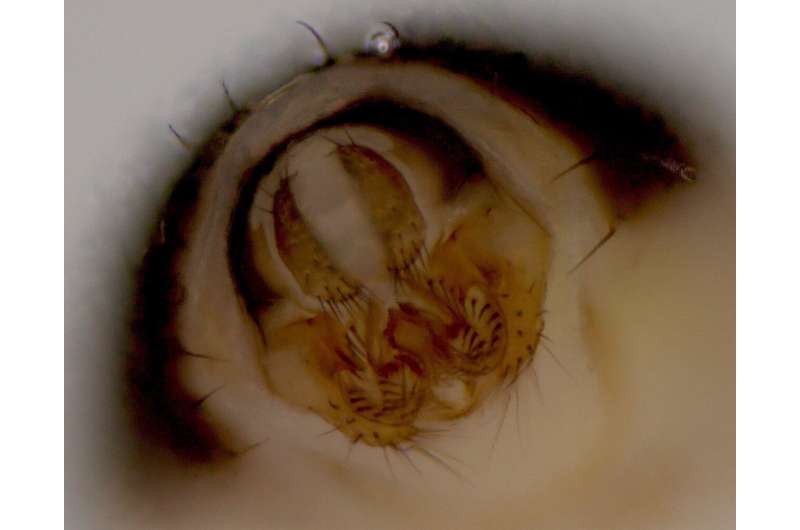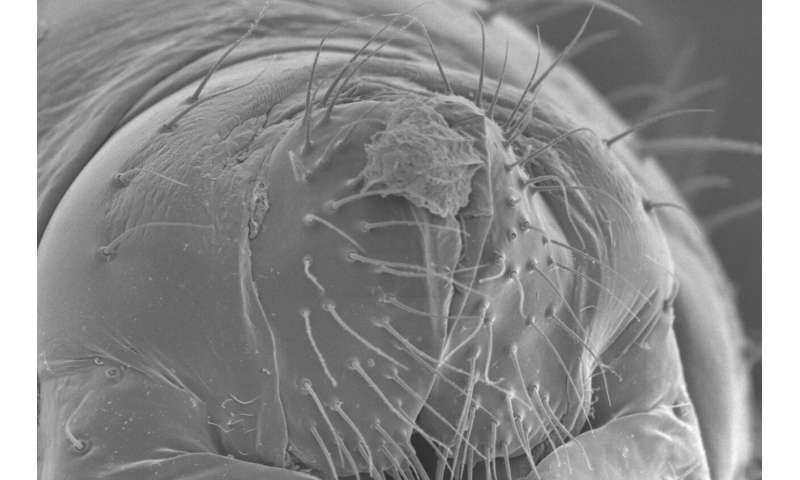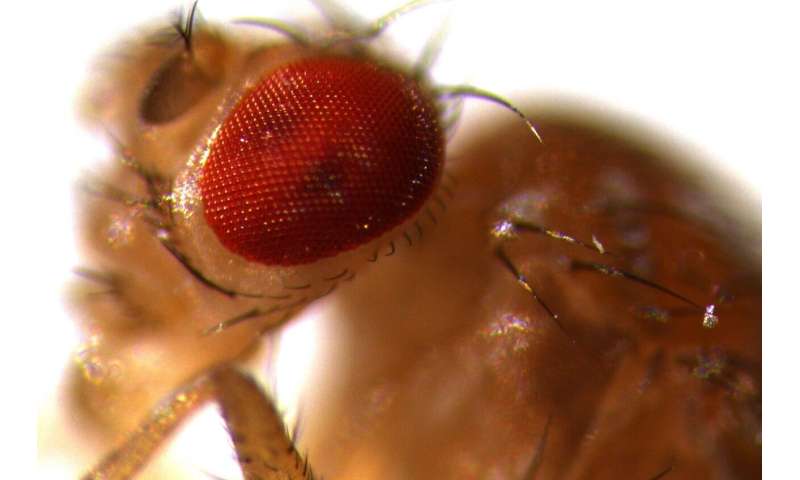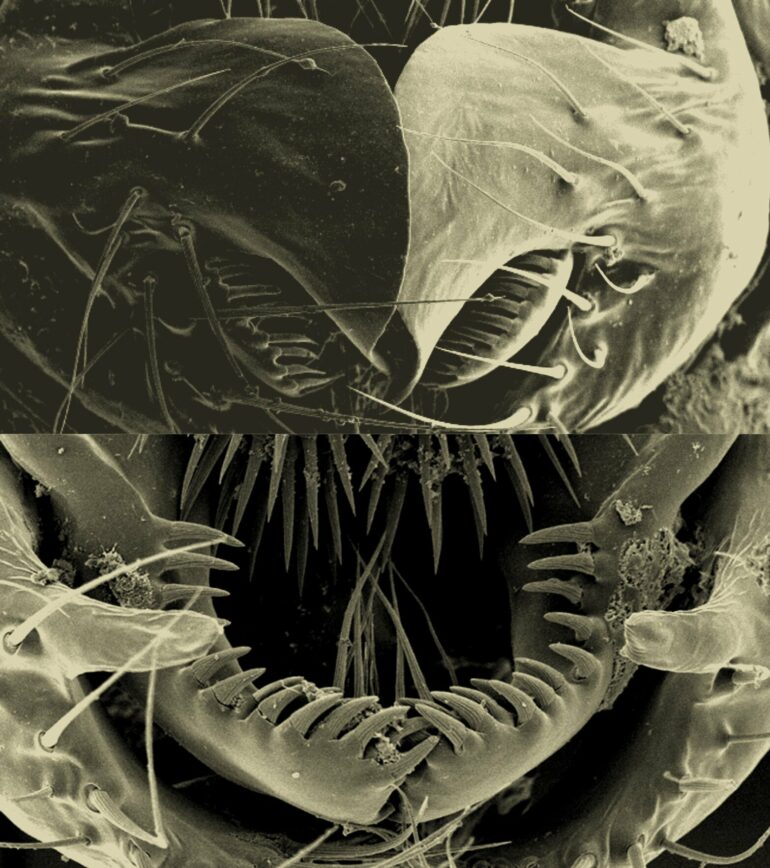Fruit flies have provided scientists with new insight into the genetic basis for the rapid evolution of male external genitalia driven by sexual selection.
Secondary sexual characteristics such as peacocks’ tails and the male external genitalia of insects are known to be among the fastest evolving animal body parts.
It is thought that this is driven by sexual selection including through female choice and the different evolutionary needs of each sex to find the right mate and maximize their fitness.
Now scientists at Durham University and Oxford Brookes University, UK, have found one of the genes that contributes to genital evolution between two closely related species of fruit fly. The study is published in the journal Current Biology.
The researchers looked at the posterior lobes of the male genitalia of Drosophila simulans and Drosophila mauritiana. Both are species of the Drosophila melanogaster subgroup of fruit flies.
These lobes have rapidly changed in shape and size in less than 240,000 years and those of Drosophila simulans are much bigger than those of Drosophila mauritiana.
They found that evolved higher levels of the gene Sox21b repressed the size of the genital lobes in Drosophila mauritiana, contributing to them having smaller genital lobes than Drosophila simulans.

Brightfield microscopy image of Drosophila melanogastermale external genitalia. © Javier Figueras-Jimenez.
As the posterior lobes are used by the male to grasp female flies during sex, the researchers say their findings could now help to better understand the effect sexual selection has on the genome to drive changes in genitalia shape and size.
Sexual selection has been shown to drive evolutionary change in the genitalia of other insects and animals, but this is a rare case where a gene behind it has been identified.
The research team edited the genome of Drosophila mauritiana and Drosophila simulans to show that changes in Sox21b changed the posterior lobe shape and size. This also affected the mating duration of these flies.
Project lead Professor Alistair McGregor, in the Department of Biosciences, Durham University, said, “The genital posterior lobes of male fruit flies play a really important role in sex.
“Identifying genes responsible for differences in size and shape of genital structures between species allows manipulation of Drosophila male genitalia in a way that replicates the variation that exists in nature.
“We can now do more detailed behavior experiments to determine if this variation is the target of female choice, if it gives males different ability to secure mating, as an increased mating duration seems to suggest, or if this is driven by the conflicting interests of males and females.”

A scanning electron microscopy black and white image of Drosophila melanogaster male external genitalia. © Amber Ridgway

Brightfield microscopy image of Drosophila melanogaster compound eye. © Javier Figueras-Jimenez
Research co-author Dr. Daniela Santos Nunes, of the Department of Biological and Medical Sciences, at Oxford Brookes University, said, “Although Drosophila simulans and Drosophila mauritiana can mate with each other, this happens very rarely and indeed D mauritiana females are much choosier than D simulans females.
“Therefore, identifying their own species by genital size, could be one way that these particular species ensure they are mating more efficiently and are therefore reinforcing the divergence of their species.
“This reveals part of the genetic basis of how male genital evolution has been driven over thousands of years due to sexual selection.”
More information:
Sox21b underlies the rapid diversification of a novel male genital structure between Drosophila species, Current Biology (2024). DOI: 10.1016/j.cub.2024.01.022. www.cell.com/current-biology/f … 0960-9822(24)00022-8
Citation:
Fruit flies give further insight into evolution of male genitalia driven by sexual selection (2024, February 2)



